Silent Angel Bonn N8 Pro and Bonn NX Ethernet Switches and Genesis GX Clock
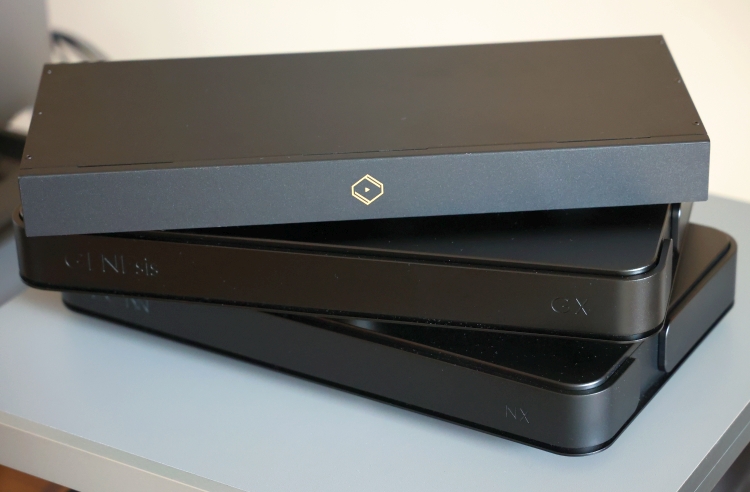
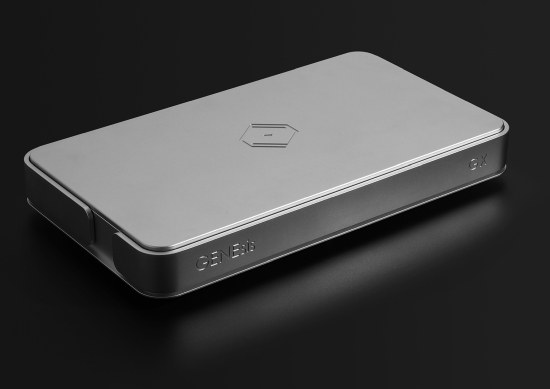
Genesis GX Clock
Built-in clocks share system resources, such as power supplies, with other components, all interconnected on the same circuit board. Various situations can interfere with the clock signal, such as electrical pulses caused by changes in system loading, interference with other electronic components, noise from the network, and jitter effects caused by the system. This is where an external stand-alone clock comes in. With less interference, the clock source can ensure the purest clock signal possible.
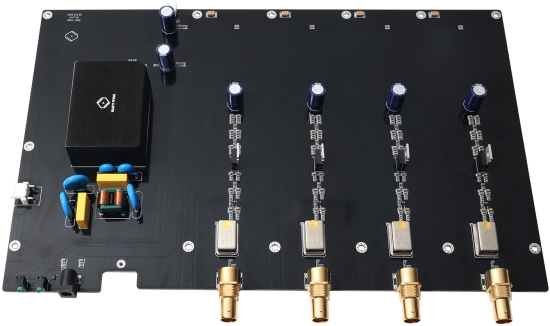
The technology for the Genesis GX clock was developed for the most demanding Scientific and Instrumentation applications where high-performance clocks routinely cost tens of thousands of dollars. The Genesis GX aims to deliver this level of performance and precision at a fraction of the price.
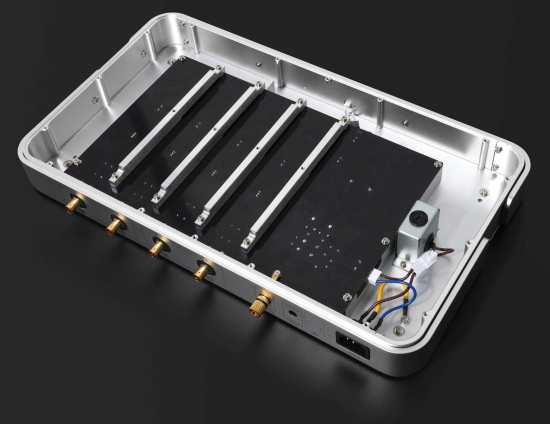
The Genesis GX is housed in the same beautiful and super-solid dual-layer galvanized steel and aluminum casing as the Bonn NX. Like the Switch, it has a built-in Radar-Grade Switching Power Supply, but it can also be powered by Silent Angel’s Forester F2 external linear power supply to further improve power delivery. A gold-plated ground connection terminal offers the potential for further noise reduction.
The Genesis GX features four individual Word Clocks, including two state-of-the-art, 25 MHz units. Each clock unit includes its own TCXO clock and circuitry and is critically spaced and electrically isolated to eliminate interference and noise.
Currently, 10MHz is the most common Word Clock frequency; however, according to Silent Angel, this frequency was initially chosen for GPS equipment and not optimized for audio. After exhaustive testing, their R&D team discovered that the ideal frequency for audio and networking devices is 25MHz. Nevertheless, the unit provides both 25MHz and 10MHz word clock outputs to work with Silent Angel products as well as other brands.
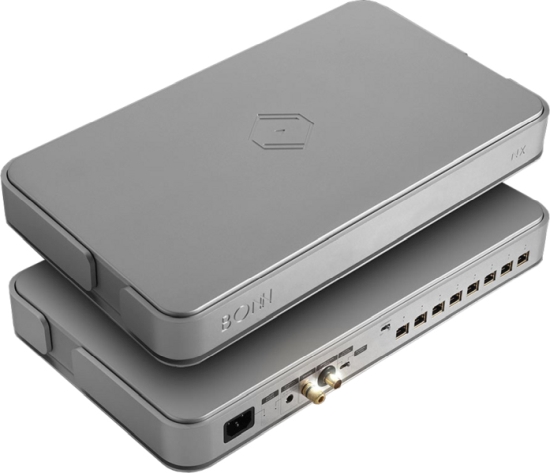
How can a Network Switch affect the Sound Quality?
A clock for a network switch, you say? Lower Jitter? What benefit could this possibly have given that the signal is inherently non-synchronous and thus should not care about its time base?
Well, as I am increasingly beginning to find, you have to turn things around and think about the circumstances of the surroundings in which the signal is created, received, and relayed. My experience so far suggests that it’s not so much the network signal itself. Critics may point out that this would actually be impossible given that it is non-synchronous packet-based and error-corrected signal. Rather, it is the environment in which the network signal travels, the signals it picks up along the ride, and how they interact with the receiver, power supply, and other downstream circuitry that makes the difference. A higher-spec clock crystal that is implemented with better associated power supply components may have less interaction or lower emissions. The external Genesis GX, finally, is not just a more accurate TCXO clock, but thanks to no space constraints, it can also be implemented much more thoroughly, with more advanced associated circuitry and a much more elaborate power supply.
Not just for a NAS or an online Streaming Source
Indeed, a switch also influences the sound of music stored in the local library of a music server, and it affects both sources equally. Likewise, I hear the impact with all servers and streamers, and even with my CH Precision components, including the ones that have nothing to do with digital audio, such as the preamp and power amp. If you accept my working theory that it’s not the network signal that matters most but rather the external influences on it, then this also makes sense.
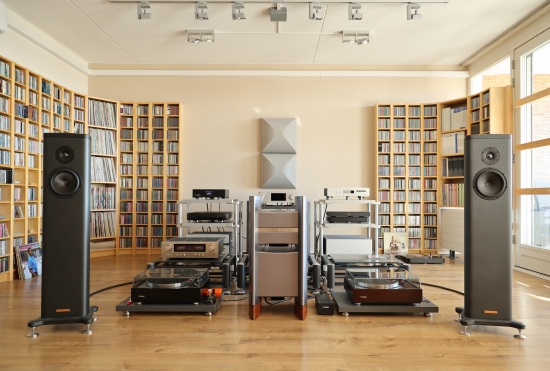
System Context
The Silent Angel products will be listened to in my main system, consisting in the basis of the CH C1.2 DAC, CH L1 preamp, and CH A1.5 power amp with the Magico S1 MkII speakers. In the photo above, the middle rack with the CH equipment is almost entirely hidden from view by the Halrco Eclipse power amp. For this review, however, I stuck to my own CH A1.5 power amplifier. The main digital sources are the Grimm MU1 and Antipodes Oladra music servers and the Aqua La Diva M2 CD transport. The speaker cables used are the Jorma Unity. The CH system sits on Artesania Exoteryc and Aire racks while the digital sources and most review components sit on HRS EXR racks.
Listening
As I’ve experienced with all switches so far, there is always a particular sonic character they bring to the table. Depending on the brand and model, the sound can become airier, leaner, more spacious, voluptuous, saturated, detailed, refined, or more relaxed, just to name a few directions I have encountered during my past few Switch reviews.
As I soon found, Silent Angel switches also bring their own character to the table which, interestingly, deviates from the directions I have heard from switches so far. Character aside, the Silent Angel switches are also very effective, and their influence can be heard with every networked music source that is listened to, be it the Grimm MU1, the Antipodes Oladra, or the Aqua LinQ.
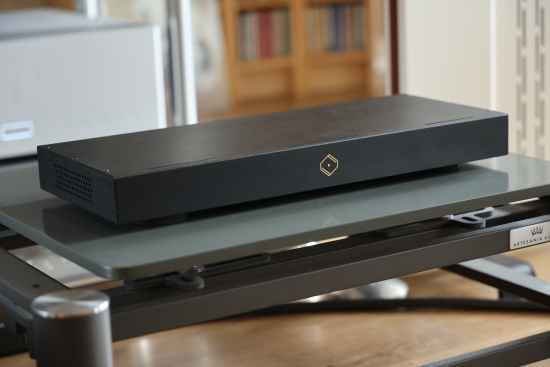
Bonn N8 Pro
To prepare for this test, I compiled a playlist with multi-style tracks, both from my local library and streaming via Qobuz, and first listened to them using my standard setup using an entry-level Linksys switch. Then, I connected the Bonn N8 in place of my standard Linksys switch and made sure to connect all network cables in my system, including the ones for my CH Precision components, including the preamp and power amp.
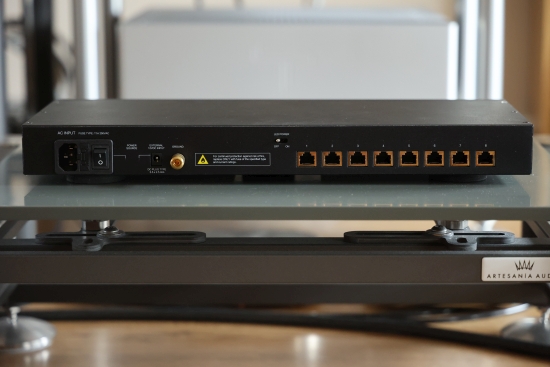
As alluded at further up, the Silent Angel switches take a different direction than I’ve heard from a high-end switch so far. Rather than making the music sound brighter or darker, the N8 Pro does not alter the openness or treble behavior at all. Instead, it adds a voluptuous and meaty touch to the bass, deeper tonal saturation, and an overall rounder, warmer, and richer feel. And I consistently hear this impact, with streaming as well as local-library music.
Interestingly, while most high-end switches I heard created a larger soundstage, the N8 Pro does not affect this sonic aspect. The stage does not become broader or smaller, which I think is actually a perfectly valid attribute because bigger is not always better. Another aspect that seems unchanged is the blackness of the sound or, in other words, the silence. One might expect a lower noise floor to result in being able to hear deeper in the mix, but I can’t say this is the case.
While the pacing remains upbeat, the extra bloom and saturation seem to claim a bit of articulation and transient immediacy, which makes the music feel less urgent and agile.
Whether by virtue of reduced external influences or thanks to its full-blooded, smooth, and easy-going character, the Switch has a gentlemenlike undisturbing and calm behavior. There’s a relaxing friendliness while the music flows fluidly and freely. There is more flow with enhanced liquidity. Some might say the switch makes the music sound more “musical” or less stereotypically “digital” and that’s a valid point of view. Certainly, for systems that verge on sounding bland, lean, or hard, the N8 Pro can be an ideal panacea. However, I do not feel this is a very neutral representation, and, depending on personal taste and system context, the N8 Pro can also make the music sound less vital and exciting.
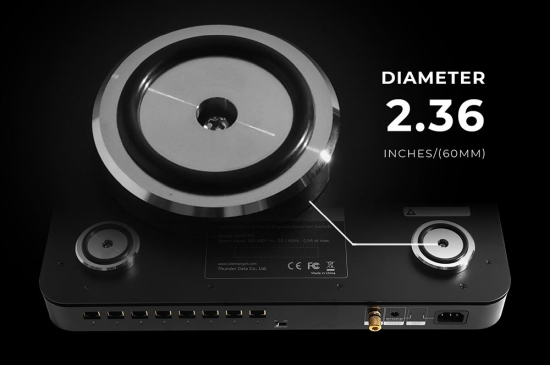
The Bonn NX and Genesis GX have solid machined footers with an inlaid rubber ring.
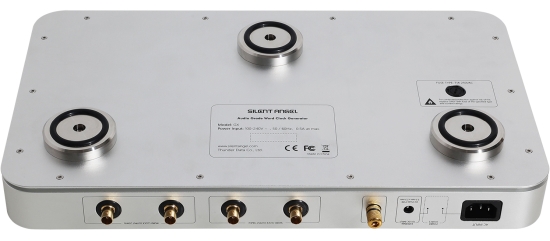
Next: Listening to the Bonn NX and Conclusion
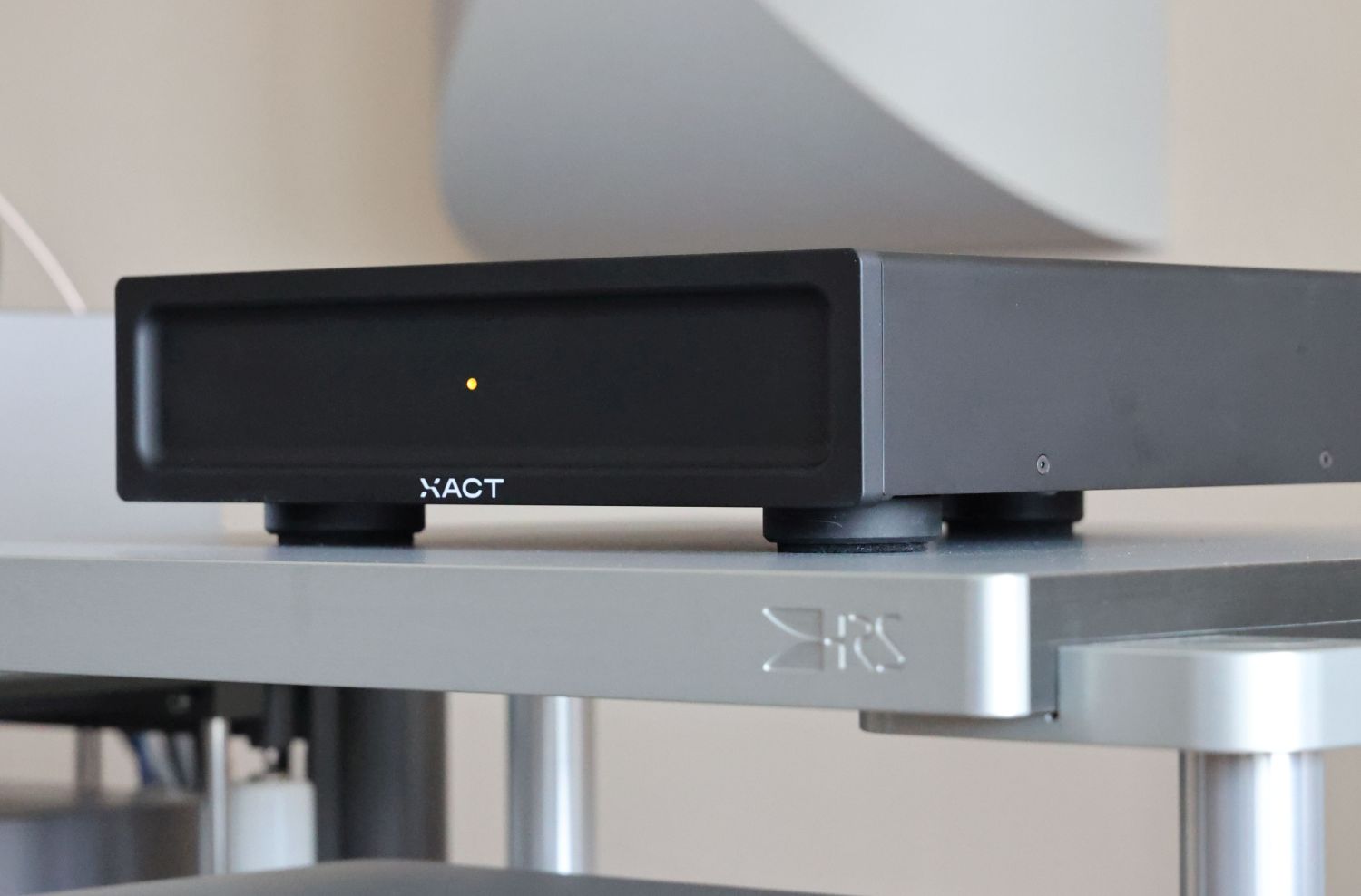
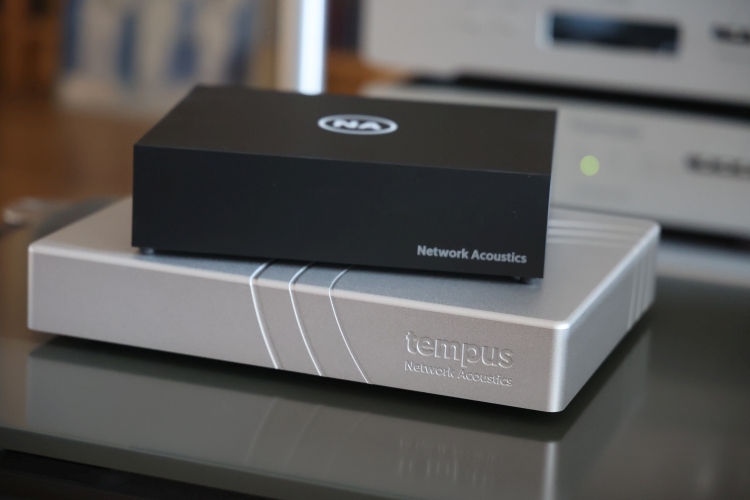

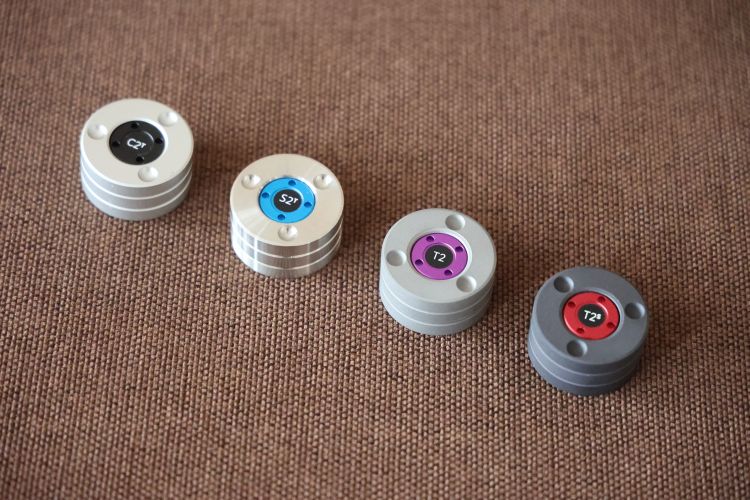
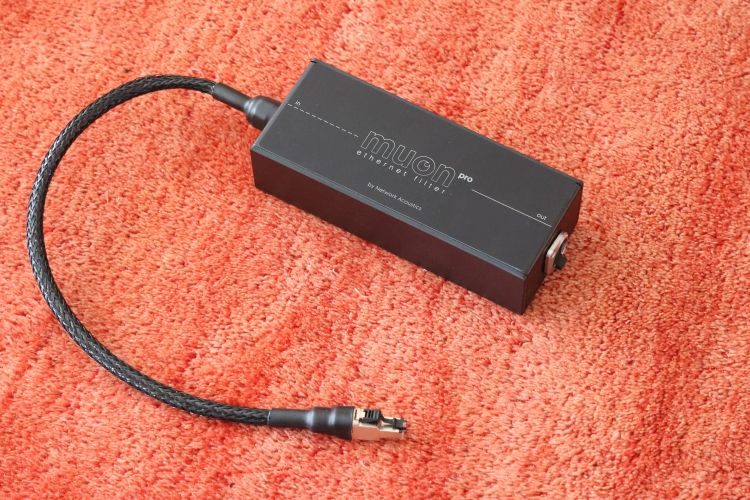
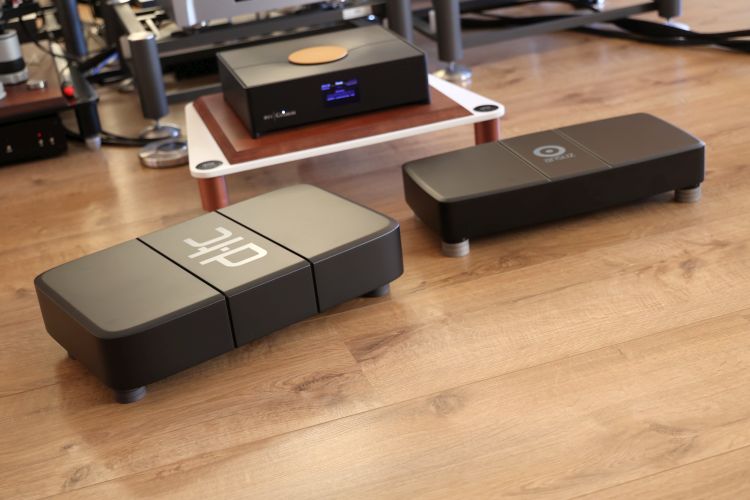
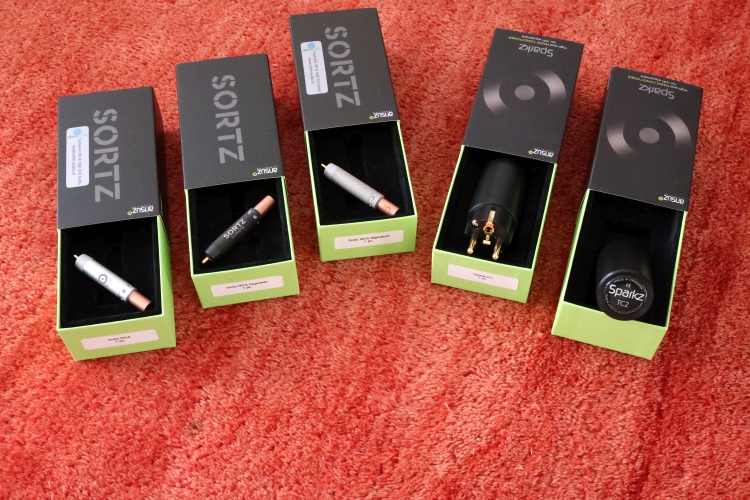
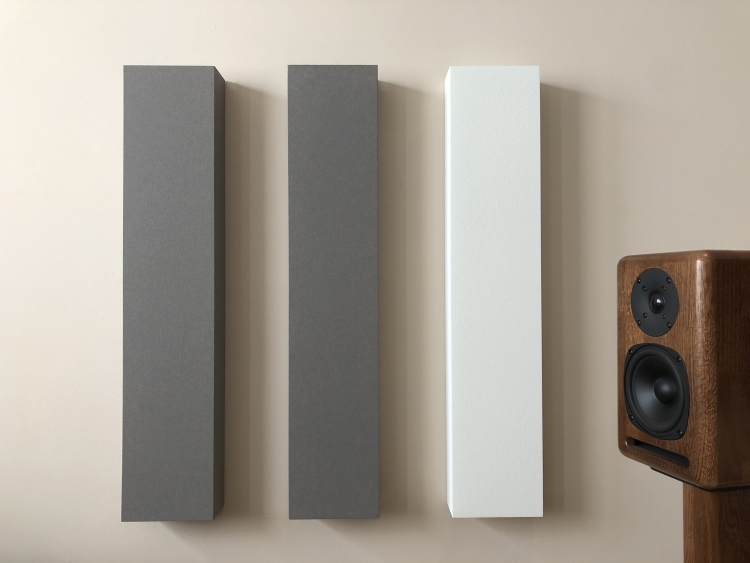
Thank you for the feedback, Christiaan.
I fully agree with your assessment that networks and switches are crucial elements that cannot be overlooked. I think in digital audio you cannot “not have Interference” where the network signal travels an interference inevitably affects the signal transmission across the network and ultimately the sound quality.
Unfortunately even the choosen material and build of the clock cable can significantly impact sound quality as various users have experienced. It never ends! But that is a good thing, isn’t it?
Best regards,
Paul
P.S. The manufacturer is Silent Angel, as you’re well aware, but at the end, you referred to it as NA.
Hi Paul, indeed, everything matters! Thanks for the tip, I’ve now corrected the error!
Hi Christiaan I’m keen to hear your views on the NX plus GX vs the network acoustics combo (tempus, muon pro) – if you could only have one, which would it be? Thanks! Damien
They are pretty much opposites: the Silent Angel robust, dynamic, and down-to-earth and the Network Acoustics lean, lush, and airy. There is no “best”, only a more or less ideal combination with the given setup. But perhaps most of all, personal taste will be the deciding factor and your preferences need not be the same as mine. That said, as mentioned in the review, I have ordered the NX + GX for myself and made the combo a HFA Favorite.
Hey Christian, just curious—since the Greek reviewer only tested the MKII and didn’t compare it to the previous LPS, and others have noticed the MKII is quite a bit better, I was wondering: he kept the Tempus + Muon Pro and sold his Telegärtner M12. Considering that, and the much higher price of the Silent Angel NX + GX, do you think the MKII upgrade might change your take on Tempus + Muon Pro vs Silent Angel?
Hi Michael, that’s impossible for me to say without having heard the MkII. That said, the Silent Angel and Network Acoustics products are sonically almost opposites. One smooth, fluid, and free-flowing, and the other tight, crisp, and expressive. For me, the utmost crispness and expression is preferrable, even if this means less fluidity, magic, and refinement than I know to be possible, and that is why I use the SA combo. But that does not mean that I feel other switches should aspire to the same goal. All switches I heard have their own approach, and many of them offer something unique. I can’t say any approach is “best”, only that one works better for a given person’s preferences and system, than the other.
Hi! I have a few questions:
“Bonn Network Switches enable an isolated “Network Ecosystem” to create an independent low-noise, low-interference HiFi audio zone”
Can you explain what this means? I looked on Silent Angel’s website, but there’s no technical information available about the switch.
“that effectively separates your audio devices from household traffic”
That’s what any Ethernet switch will do.
“and reduces the degradation of network broadcasting storms”
Not sure what this means, but by definition all switches will forward broadcasts to all ports; so many things would break if they did not.
“and latency caused by bandwidth-intensive activities from PCs and other devices.”
Any switch will do this. MUST do this, in fact, or it’s not a switch. If my PC is engaged in moving a lot of traffic, no devices in my audio rack will ever see it.
It still baffles me that you have CH Precision components and yet only use a Magico S1. What’s up with that?
It’s a question I get more often. It is not that I do not want to upgrade, but I have not yet succeeded in finding speakers that work better for me than the S1 MkIIs across the board. I tried the S3 MkI and S3 MkII, and while they outperformed the S1s in the bass, they performed less well in a few other areas. I have high hopes for the S3 MkIII, but so far, have not been able to compare it directly to the S1 MkII.
Hi Christian, I’ve only just read (and enjoyed) your various network switch reviews. I guess it’s a little unfair to the manufacturers to make comparisons, you were very positive about the Ansuz switches plus various upgrade paths/components but have opted to purchase the Silent Angel offerings – can you shed any light as to why you made that choice?
Thanks
Guy
Hi Guy, it is a matter of system synergy and personal preference. In my system, I prefer components that provide the maximum solidity and dynamic impact. The Silent Angel components are not as airy, ethereal, and refined, nor as magical, as the Ansuz units, but they do provide a super-robust, impactful, and solid sound.
Hola ! La fuente de poder modelo Forester básico , reemplaza a Equipos Puritan que regulan voltaje y limpian la corriente doméstica ? Si fuera asi y efectivamente hace los mismo que un Puritan , el Forester Básico puede ser conectado a más de un aparato que necesite corriente?
Saludos